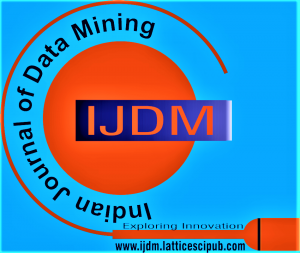An Overview on Data Mining and Data Fusion
Vinayak Jain
Vinayak Jain, Department of Computer Science, SRM University, NCR-Delhi, Sonepat (Haryana), India.
Manuscript received on 12 December 2022 | Revised Manuscript received on 22 December 2022 | Manuscript Accepted on 15 May 2023 | Manuscript published on 30 May 2023 | PP: 1-5 | Volume-3 Issue-1 May 2023 | Retrieval Number: 100.1/ijdm.A1624053123 | DOI:10.54105/ijdm.A1624.053123
Open Access | Editorial and Publishing Policies | Cite | Zenodo | Indexing and Abstracting
© The Authors. Published by Lattice Science Publication (LSP). This is an open-access article under the CC-BY-NC-ND license (http://creativecommons.org/licenses/by-nc-nd/4.0/)
Abstract: Strong adoption of Internet and Communication technologies across industries in the last two decades has led to large-scale digitization of business processes. While this has helped in the instant availability of information, over the period, the source and amount of this information have increased multi-fold giving rise to Big Data. With the increase in volume, the relevance of data in its raw format continues to decrease over time. According to HACE Theorem, Big Data has autonomous sources being distributed and decentralized data in a complex relationship with each other. Making sense of this ever-growing large pool of data has become increasingly difficult and has created a new problem waning the initial gains made via the digitization of systems and processes. This gave rise to the evolution of multiple Data Mining techniques that have helped to classify large volumes of data into relevant segments and drive value to help provide meaningful information. To extract and discover knowledge from data, Knowledge Discovering Databases (KDD) help in the refining of data. This paper discusses various data mining techniques that help to identify patterns and relationships to help make business decisions using data analysis. Furthermore, the Data Fusion method is reviewed which deals with joint analysis of multiple inter-related datasets providing multiple complementary views to help further with precise decision-making.
Keywords: Big Data, Data Mining, Data Fusion, KDD, HACE Theorem
Article of the Scope: Data Mining
